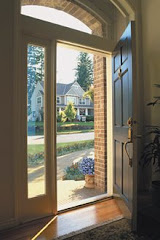MARKET RECAP
The future came sooner than many of us expected last week. We've been prodding, possibly even importuning, over the past few weeks for borrowers to lock in rates, and now it appears with good reason. Interest rates across the board spiked last week. Depending on who you asked and when, the 30-year fixed-rate mortgage rose as much as one percentage point. Officially, Bankrate.com has the national average at around 5.5%, but its survey was conducted before the full brunt of the increase.Various explanations were given for the spike in interest rates. Impending inflation was at the forefront, with one particularly animated pundit claiming U.S. inflation could approach Zimbabwe levels. Fact is, most people are already expecting some inflation down the road, so inflation alone was an unlikely reason. A more plausible explanation is that the Treasury Department has been issuing so much debt lately, $101 billion worth last week alone, that it simply swamped demand, so bond prices fell and the interest the Treasury had to pay to attract buyers rose.
At any rate, it's not the end of the world. Over the past 25 years, the 30-year fixed-rate mortgage has averaged around 7.8%. In 2007, the average rate was around 6.3%. And even last year, the average rate was around 6.2%. We wouldn't be surprised to see some easing in rates this week, but we still think the longer term trend will be higher; therefore, we still think now is as good a time as any to lock in that loan.
The big concern with last week's rate spike is that it could put downward pressure on home prices and sales. It's a legitimate concern, to be sure, given that existing home sales rose again in April to an annual pace of 4.68 million units, with about 45% of April's sales attributable to foreclosures and short sales. Meanwhile, new home sales continue to make positive strides, albeit slight, with sales rising to 352,000 units annually.
The good new is that homes remain affordable, at least when vetting the national numbers, which, admittedly, aren't always applicable to the local scene. That said, the median price for an existing home in April was $170,200, while the median price for a new home was $209,700.
Maintaining A Healthy Optimism !
There are a couple of reasons why we tend to accentuate the positive in these newsletters: one, the bad news is already thoroughly accentuated in the media; and two, the bad news is much more impactive to the human psyche than the good news. Science proves it. Daniel Kahneman won the Nobel Prize for his work on Prospect Theory, a key component of which is “myopic loss aversion.” Simply stated, humans have an asymmetric risk-reward utility curve, meaning the pain of losses looms much larger than a comparable potential gain.
Nassim Taleb explicated the relationship in Fooled By Randomness. The problem, according to Taleb, is that people are simply overwhelmed by what he calls “noise,” often the bad news. Taleb quantifies the pain by assuming, like Kahneman, that losses are felt greater than pain. Indeed, Taleb notes that some psychologists estimate the pain of loss is 2.5 times the pleasure of gain.
Imagine if you were to examine the news and it was split 50/50 between good and bad (which it isn't, but we'll assume it is for argument's sake). If you were to examine the news each hour over 12 hours, you would receive six hits of good news offset by six hits of bad news. Even though the news was evenly split, you'd be feeling 2.5 times more displeasure than pleasure. For that reason alone, we think we are providing good, logical balance. But for even more balance, it might be worthwhile at times to turn off the news altogether.




No comments:
Post a Comment